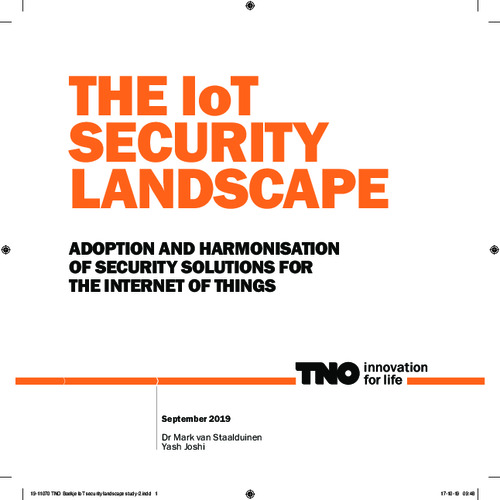- Home >
- Services >
- Access to Knowledge >
- Trend Monitor >
- Source of threat >
- Trend snippet: IoT security challenge: device identity and root of trust
Trends in Security Information
The HSD Trendmonitor is designed to provide access to relevant content on various subjects in the safety and security domain, to identify relevant developments and to connect knowledge and organisations. The safety and security domain encompasses a vast number of subjects. Four relevant taxonomies (type of threat or opportunity, victim, source of threat and domain of application) have been constructed in order to visualize all of these subjects. The taxonomies and related category descriptions have been carefully composed according to other taxonomies, European and international standards and our own expertise.
In order to identify safety and security related trends, relevant reports and HSD news articles are continuously scanned, analysed and classified by hand according to the four taxonomies. This results in a wide array of observations, which we call ‘Trend Snippets’. Multiple Trend Snippets combined can provide insights into safety and security trends. The size of the circles shows the relative weight of the topic, the filters can be used to further select the most relevant content for you. If you have an addition, question or remark, drop us a line at info@securitydelta.nl.
visible on larger screens only
Please expand your browser window.
Or enjoy this interactive application on your desktop or laptop.
IoT security challenge: device identity and root of trust
5.8 DEVICE IDENTITY AND ROOT OF TRUST
The raison d'être for the Internet of Things are the Things themselves, i.e. the devices that interact directly with the physical world, measuring and sometimes controlling their environments. Securing these devices presents a challenge that is somewhat distinct from securing a laptop or a mobile phone. In this section we specifically discuss the security of the device and its firmware; the supply chain for the device and the management of its lifecycle are equally important and discussed in dedicated sections above. The device may run a minimal operating system (OS) and application and is expected to provide them with the necessary computational and storage resources as well as a secure execution environment. It is also noted that device security is closely linked to the security of its communication, since the device includes a connectivity module and authenticates itself as an initial step during any communicative exchange. Therefore, there are close links between the material discussed in this section and that presented in the sections on OS, communication, lifecycle and supply chain.
5.8.2 Key Findings
– A hardware RoT is the only immutable trust anchor; the chain of trust should build on a hardware RoT. Currently, only 4% of IoT devices use a hardware RoT.225
– RoT-based cybersecurity can be provided by several solutions including Secure Elements, TPMs, TEEs, Cisco Trust Anchor, Microsoft’s Pluton Security Subsystem, and SIM cards.
– Solutions to secure firmware and booting are being proposed as a joint effort of the hardware and software industry, however, their adoption for IoT devices is still in the initial stage.




